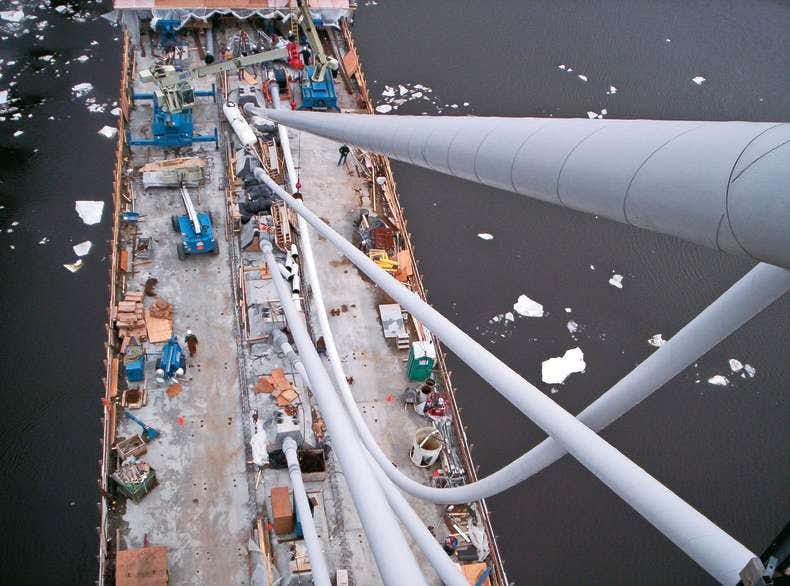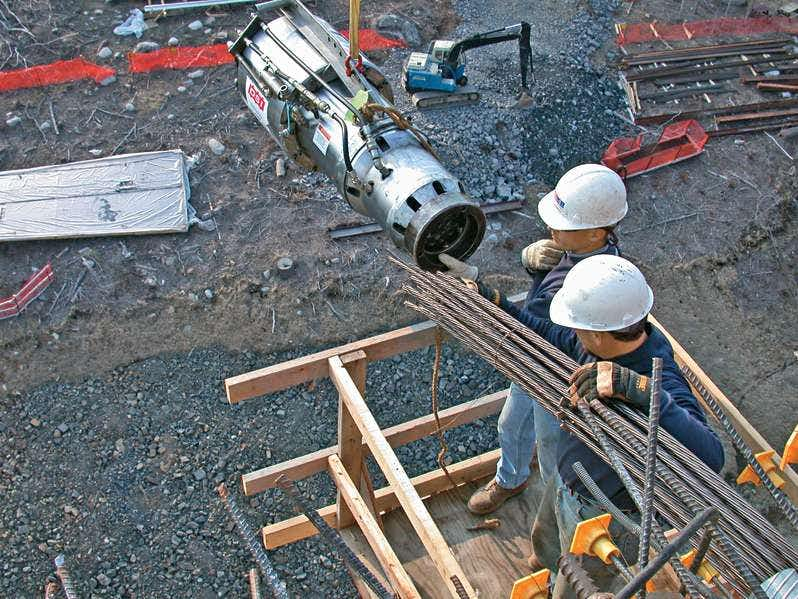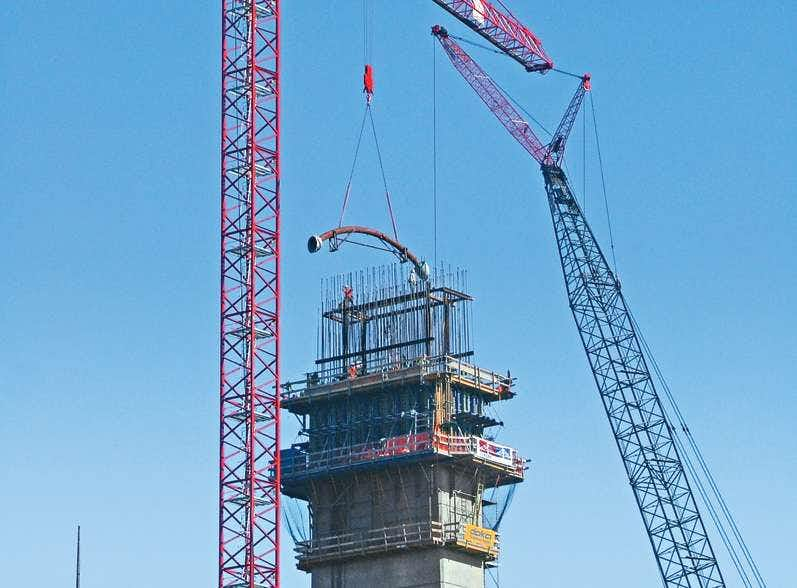Development and Installation of Protection and Monitoring Systems on a Bridge
The new Penobscot stay cable bridge in Bucksport, Maine, USA will replace the old Waldo-Hancock Bridge, a steel suspension bridge, designed by David B. Steinman and opened in 1931. DYWIDAG developed and combined several protection systems, as well as supplied DYWIDAG Form Travellers for the construction of the bridge.
Context
The new stay cable bridge has a main span of 354 m and a total length of 646 m. The architectural design of the bridge provided for two pylons with centrically arranged stay cables. The stay cables are paired in elevation in the tower, however, they land in different segments on the bridge deck.
Solution
Figg Bridge Engineers, Inc., Tallahassee, Florida developed a new system where the cables are not individually anchored in the pylon, but run through cradles with a defined curvature that are installed into the pylon. The continuous stay cables run from the bridge deck, through the cradle at the top of the pylon, and back down to the bridge deck in the subsequent span. In addition to significant reductions in material costs and construction period, the “cradle system” allows the pylon to be very slender and aesthetically appealing.
The stay cables for the new Penobscot bridge consist of 61 to 73-0.6" epoxycoated strands encased in a common sheathing. Each strand will pass through its own individual stainless steel tube in the cradle assembly, eliminating strand-to-strand interaction in the curved portion of the stay cable caused by shear forces.
Another feature of the bridge is an asymmetrical curve in one back span. Due to the asymmetric geometry of the cradles the installation of the 40 cradles into the pylons on site would have been very elaborate. DYWIDAG developed a pedestal support system for the complex design that significantly facilitated the installation of the cradles into the pylons. This system integrated all angles and elevations into the fabrication prior to installation into the pylons.
In addition, DYWIDAG developed a protection system making it possible to permanently monitor the stay cables. For this purpose, DYNA Grip® Stay Cables are first inserted into hermetically sealed HDPE ducts. The first DYNA Grip® Stay Cables have been installed in September 2005. During installation warm dry air is first pumped into the stay cable system. Then the HDPE sheathing will be filled with pure nitrogen. The gas will eliminate the presence of all potentially corrosive elements such as oxygen, chlorides and humidity. Each stay cable contains a small nitrogen gas reservoir that will feed additional pressurized gas at an overpressure of 0.14 bar in the event of a small leak. In addition, gauges will be connected to each stay cable recording fluctuations in pressure and providing a continuous monitoring system. A sealing cap that forms part of the stay cable anchorage fully encapsulates the entire anchorage system. For the sealing cap of the anchorage a transparent material was used as the end plate which allows direct visual inspection of the anchorage area.
The main challenge was to cost effectively provide a gas-tight sealed system which on one hand can accommodate the movements and oscillations of a stay cable and on the other hand can withstand the extreme temperature fluctuations occurring in the US state of Maine.
Another monitoring tool used for the Penobscot bridge is the DYNA Force System. It consists of a series of measuring coils fixed to each stay cable. The system can measure readings with an accuracy of +/- 1%. The system is very robust, requires no maintenance and is designed to have a similar service life as the bridge. This will allow the owner to regularly and cost-efficiently monitor the forces in the stay cables as part of the inspection procedures and without considerable expenditure.
Protection of the Penobscot bridge and therefore of the DYNA Grip® Stay Cable System consists of a combination of four safety measures:
Epoxy resin coated DYNA Grip® Stay Cable Strands,
HDPE ducts,
nitrogen gas protection system,
DYNA Force Monitoring System.
Completion of the new Penobscot bridge is scheduled for late 2006.






